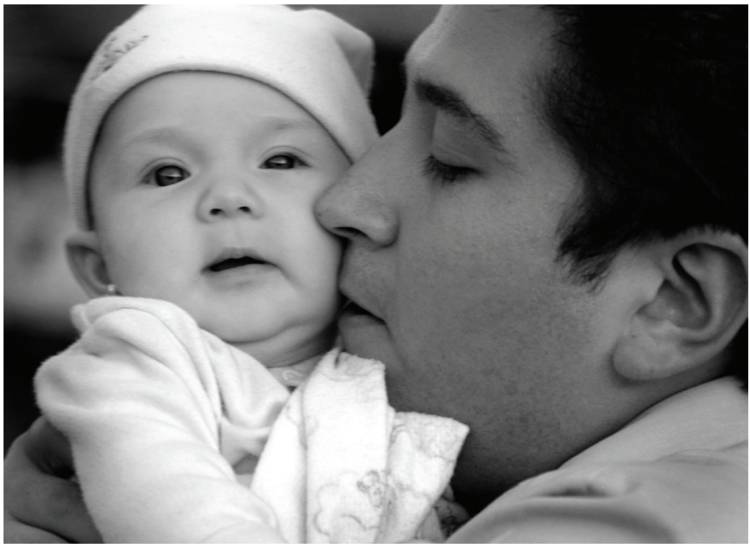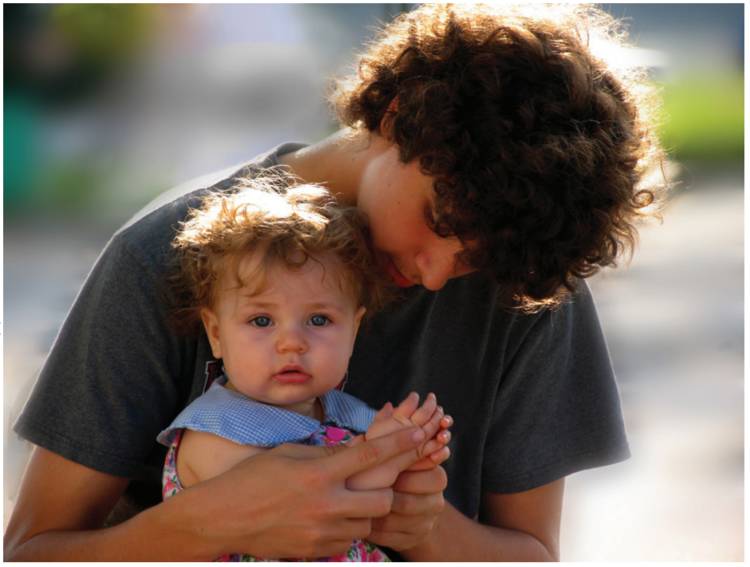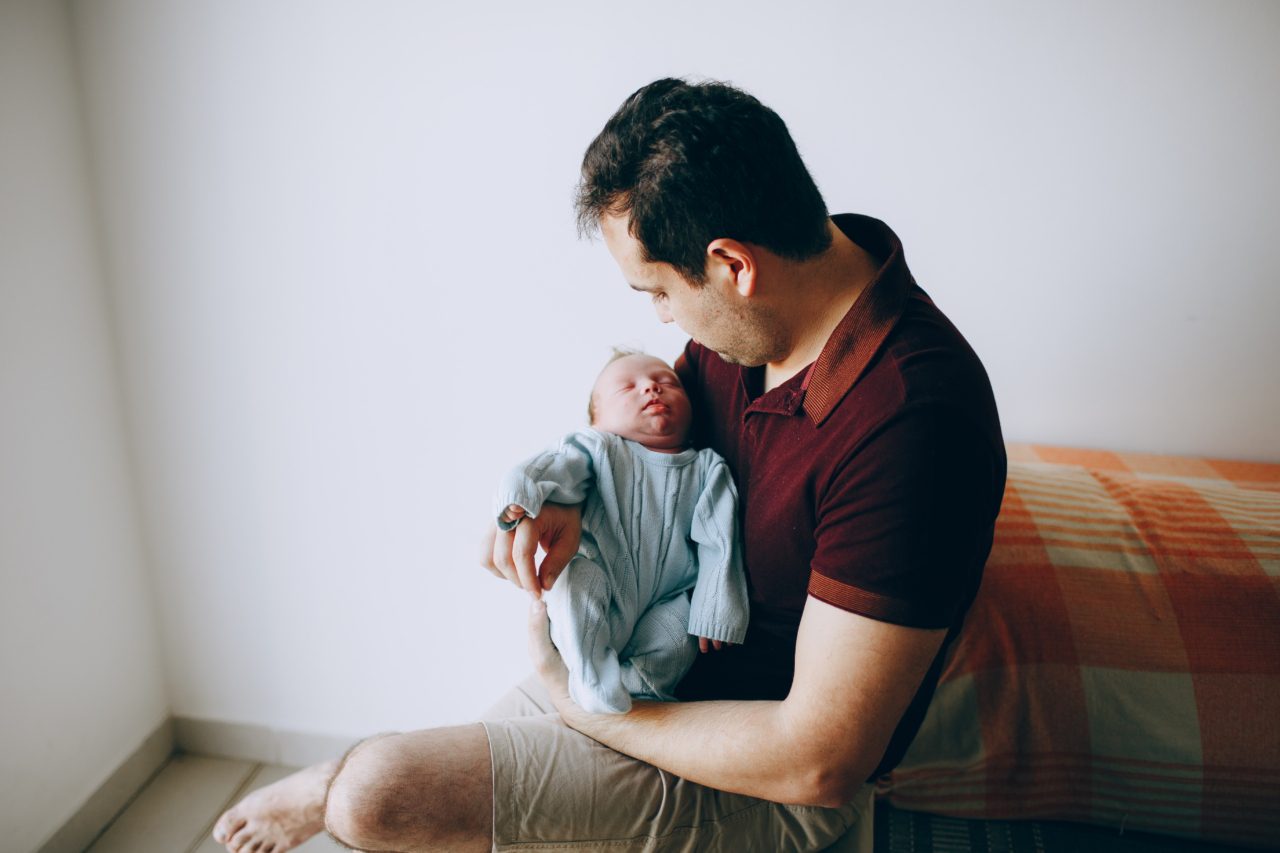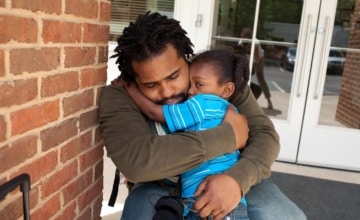Paul Florsheim, University of Wisconsin, Milwaukee
David Moore, University of Puget Sound
Jason Burrow-Sánchez, University of Utah

Download this featured article for free.
Abstract
This article advocates for system-level change in prenatal health services. Specifically, the authors describe how they “discovered” the idea of father-inclusive prenatal health care (FIPH), which involves providing an array of services to help young expectant fathers prepare for the challenges of parenthood. Over the course of 25 years, research with young parents led to a series of “aha moments,” inspiring the authors to advocate for the transformation of prenatal care to include services for fathers, guided by a well-defined, strategic approach. They include lessons learned from their work with young fathers, including two young men—Darnel and Victor—whose personal journeys informed the development of these ideas and convictions. Prenatal care is an often underutilized opportunity for helping young parents provide their children with a stable family life at a time when family stability is a vital public health challenge.
In the 1990s, we became curious about the impact of father absence on child development, primarily because we noted psychological differences between children with and without involved fathers, in both our research and clinical work. For example, we observed that some children who grow up without fathers experience the absence as a feeling of deprivation, even if they felt well cared for and loved by their mothers and other caregivers. At that time, there was far less fatherhood research than there is now, but the differences we observed had already been documented by others. Some researchers, such as Ross Parke, Michael Lamb, and Joseph Pleck, had demonstrated the positive effect of fathers on children’s cognitive and social development (Lamb, Pleck, & Levine, 1985; Parke, 1996). Other researchers, such as Sara McLanahan and her colleagues, documented that children in father-absent families were more prone to depression, had trouble regulating their behavior, and were more likely to have problems at school (McLanahan & Sandefur, 1994). Also, at the time that we launched our research on fathers, there was a heated, political debate about the rise in father absence and its influence on communities (Blankenhorn, 1995; Murray, 1999; Wilson, 1996).
The work done by the pioneers of fatherhood research freed us from needing to demonstrate the importance of fathers to the health of children or communities (Lamb, 2010). This foundational work was fortunate because we were more curious about the fathers themselves, beginning with the question of why some fathers become deeply connected with their children whereas others do not. In particular, we wanted to know what happened to those fathers who became disconnected from their children. Did they have trouble bonding with their infants? Were they unable to maintain a civil relationship with the mother of their child? Did their personal problems get in the way of their functioning as fathers? Early in our careers, we decided that the best way to answer these questions would be to identify and get to know young fathers who were at risk for becoming disconnected but were still somewhat involved, even peripherally.
We quickly discovered, however, that fathers were not so easy to find. In the 1990s, fathers didn’t receive any services, they didn’t congregate in clinics or programs, and they didn’t look any different from young men who were not fathers. Our first “aha moment” occurred when we realized that young pregnant women were relatively easy to locate and might be able to help us find and talk to their boyfriends, the young expectant fathers. So, we started working with prenatal clinics, which gave us permission to ask their patients if they would be willing to participate in our research along with the fathers of their babies.
We received a variety of responses. Some young women said the father was already gone or that she didn’t want him to be involved. Some said they were unsure and needed to talk to him. But many said they would be happy to participate, and so would he. For those who seemed unsure or hesitant, we’d ask, “Is it okay if I check in with you at your next clinic visit?” This strategy often worked, perhaps because it gave young expectant mothers and fathers the time they needed to get comfortable with us and what we were asking them to do.
In our first study, in Salt Lake City, we recruited about 70% of young fathers whose partners we talked to during their pregnancy. Over time, our recruiting and retention rates varied between about 50% and 70% of our target population—expectant fathers—depending on the demographics and location of our samples. For example, African American fathers in Milwaukee have been more difficult to recruit and retain because of the social disadvantages that get in the way of their participation. Nonetheless, across several studies, our recruitment strategy worked well, allowing us to collect longitudinal data from about 600 fathers. At first, enlisting the support of expectant mothers was simply a recruitment strategy. Eventually this strategy became a central feature of our work, as we will explain in the next section.
It Takes Two
Our second “aha moment” was directly related to our recruitment strategy. Although we hadn’t set out to do research with young mothers, we decided it was prudent to include them because they were our bridge to young fathers. So, we shifted our focus to studying “co-parents,” which meant that we administered the same set of interviews and questionnaires to expectant mothers and fathers simultaneously but in separate rooms to preserve their confidentiality. We quickly discovered that young mothers could tell us a lot about their partners that they—the fathers—could not or would not tell us themselves.

Fatherhood can be a transformative process. Photo: Julie Shipman
Occasionally, these young women would tell us things that their partners had covered up, such as infidelities or illegal activities. Most of the time, however, they told us about the soft and tender sides of these young men, such as how he had taken care of her when she was sick or comforted her when she was sad. The young mothers often told us about parts of their partner’s history that were too painful for them to tell us directly, such as being abandoned or abused as a child. Hearing about these young men from their partners helped us see them more completely and compassionately.
Having both parents come to these research meetings together also allowed us to see how they treated each other. Our observations of how the young fathers talked with and listened to their partners became a vital part of how we came to understand these men and their development as fathers. Our recruitment strategy helped us see that fatherhood is an inherently interpersonal process that begins before the baby arrives (Florsheim et al., 2003). That insight—which now seems so obvious—eventually played an important role in the development of our program to help fathers stay connected. Since then, several other researchers have found that the quality of the relationship between a father and his partner is a strong predictor of how well he will manage the transition to parenthood (Carlson, McLanahan, & Brookes-Gunn, 2008).
Thanks for Asking
Our third discovery was that young fathers had more to say than anyone could have anticipated, including their partners. Typically, the expectant mother’s first interview would last for 70 or 80 minutes. Toward the end, many young women assumed their boyfriends were pacing around outside, impatiently waiting for them to finish. Almost invariably, however, the interviews with the young expectant fathers ran longer than the interviews with their partners. When these young women found out that their boyfriend was still talking, they’d often say something like, “What could he be talking about? He never talks!” It dawned on us that, given the right context, these young men were not just willing to talk but they actually enjoyed the opportunity! Many were afraid and excited by the prospect of fatherhood and wanted to unload. We were asking questions that no one had ever asked them before, and they were saying things they had never articulated. Simple questions like: “How do you feel about becoming a father?”, “What sort of father do you hope to become?”, and “What could get in the way?” opened doors they did not know were there. Once these young men realized the interview was not a test, they allowed themselves to get curious about what we were asking. The implications of this discovery— again so obvious in hindsight—was that young fathers are easily engaged when they feel listened to and appreciated.
Better Than Expected
The fourth “aha moment” took us a bit longer to grasp. Here’s how it happened: We interviewed some expectant fathers who were not functioning very well. Some were gang members who showed us their bullet wound scars, some had been recently released from jail for burglaries or selling drugs, some had been kicked out of school for fighting, and some were doing little other than smoking marijuana with their friends. After interviewing these troubled young men, we would often ask ourselves “What in the world was this young woman thinking when she hooked up with this guy?” Fast forward about 2 years. Our “aha moment” came when some of these young men, who looked like they were running headlong into serious trouble, came back for follow-up interviews and told us how they were working 50 hours a week, or back in school, or both. And then their partners reported how well these young men were doing as fathers. To be sure, some of the young men with troubled histories continued to have troubled lives, but we found ourselves surprised by how many turned their lives around, or were at least trying the make that turn.
Darnel and Cleo
Darnel, a young father from Chicago, was one of the young men who surprised us. Darnel was an 18-year-old who looked and sounded beleaguered as he recounted recent events in his life. In the months before his interview, Darnel’s father had died, he had been expelled from school for fighting, his mother had caught him selling drugs on their front porch and kicked him out, and then his girlfriend, Cleo, told him she was pregnant. As he shared all these events with us, he also seemed to be trying to make sense of his story.
Not long after this interview, Darnel went to jail for selling drugs. He got out in time to be with Cleo when she gave birth to their son, Curtis, but he was back in jail again before Curtis turned 1 year old. After he was arrested for a third time, Cleo told Darnel that she knew he could be a good father if he tried, but she needed to cut herself loose and find a different sort of boyfriend. Two years later, we were surprised to find that Darnel made a dramatic turnaround as a father and partner. He was working and staying out of trouble. More important, he and Cleo were getting along and successfully co-parenting Curtis, even though they were no longer together as a couple.
When we started studying young fathers, we made predictions about their outcomes based on the number and severity of risk factors we observed at the outset. In other words, we expected poor outcomes for fathers with a high number of risk factors (e.g., psychological problems, substance abuse, criminal history, unemployment) and positive outcomes for fathers who were at comparatively low risk. It is interesting that these predictions did not account for fathers like Darnel, who ended up doing better than we expected, based on our initial assessment of their risk status. One of the lessons we learned from fathers like Darnel is that, as clinicians, we needed be careful about prejudging fathers on the basis of their “risk profile” because, as it turns out, fatherhood can be a transformative process.
It also occurred to us that we stood to learn a lot from fathers who seemed to defy the odds. What was it about fathers like Darnel or his circumstances that could account for such a transformation? One of our most interesting findings came from a study in which we zeroed in on a group of the highest risk fathers and found that those who did “better than expected” tended to have girlfriends who scored high on a measure of interpersonal skill. Further, we found that, over time, high-risk fathers who were doing well at our follow-ups demonstrated significant improvements in their interpersonal skills, suggesting they were learning something from their partners (Ngu & Florsheim, 2011). It is important to point out that we were able to learn as much as we did from high-risk fathers, like Darnel, because we stumbled upon a strategy for finding and engaging with them. In Box 1 we summarize our approach for working with these young men, who have been widely regarded as too peripheral, too troublesome, or too disengaged to be included as partners or patients (Panter-Brick et al., 2014).
| Early outreach | Young men tend to be reluctant patients but are more open to receiving services when their girlfriends are pregnant because they are anxious about fatherhood and want to be supportive partners. |
| Enlist mothers | Expectant fathers can be effectively engaged with the help of their partners, who can be identified through prenatal health clinics. Expectant mothers who want the father of their child to be involved are often willing to help facilitate a family check-up appointment. |
| Entice fathers | Some fathers will be self-motivated to engage with their partner’s prenatal providers, but providing an incentive—such as a gift card or baby supplies—for attending an initial meeting will bring in more of those young men who are reluctant, hesitant, or very busy. |
| Express appreciation | Most young fathers get very little positive feedback for being supportive of their partners. They respond remarkably well to open expressions of appreciation for their investment and commitment. The quality of the father’s first contacts will determine whether he returns for services. |
| Evaluate for success | When conducting an assessment or a research interview, it is important to balance the need to identify risks with exploring strengths. The process should be designed to help fathers see that their own mental and physical health is vital to their child’s well-being. |
Maybe We Can Help
Our efforts to understand fathers like Darnel led us to develop a program to help young fathers make a positive transition to parenthood. Our discovery that prenatal care was a natural window of opportunity for engaging fathers was a key component of our approach because we knew that, during this time, young men were more open to receiving help if we presented that help as something that would benefit their child (Florsheim, 2014). The program, which we call the Young Parenthood Program, or YPP, draws from other relationship-focused programs, particularly those designed to help married, adult couples successfully manage the transition to parenthood (Cowan et al., 2009; Gottman, Gottman, & Shapiro, 2010). We borrowed heavily from these programs but made modifications based on what we knew about the needs and circumstances of the young expectant couples we intended to serve.

Young fathers are easily engaged when they feel listened to and appreciated. Photo: fizkes/shutterstock
First, our finding that couples with strong communication skills provide their children with more stable family environments inspired us to develop a relationship-focused program that emphasized learning to work together as parents. So, we designed YPP to help young couples listen more carefully, speak more clearly, fight more fairly, and intentionally become more supportive of each other. Some of the communication skills, which comprise the core of YPP, are outlined in Box 2. A key idea is that most couples will benefit from developing two or three selected skills to help them address the weaknesses in their relationship.
The following set of communication skills are a central feature of the Young Parenthood Program (YPP), the intervention we designed to help young parents function effectively as co-parents.
| Expressing needs/ feelings | Expectant parents learn to open up and express themselves in a positive, respectful way, without blaming or putting each other down. |
| Reflective listening | Couples learn to be quiet and listen, to speak more directly and clearly, to pay attention, and to “take in” their partner’s thoughts and feelings. |
| Asking for and receiving support | Both partners learn how to ask for and accept their partner’s support. Partners also learn how to provide support to each other in helpful ways. |
| Problem solving | Couples learn to brainstorm solutions to conflicts. They focus on finding compromises that work for both partners. This process of collaborative problem solving enhances teamwork by making shared plans to reach individual and relationship goals. |
| Conflict de-escalation | Couples learn how to recognize when conflict is escalating, cool down before things get too hot, and talk about the conflict later in a way that feels safe. |
| Minimizing negativity | Separated high-conflict parents learn to talk about how to co-parent from a safe distance to avoid unhealthy conflict that could upset or harm their child. |
Second, knowing that many of the fathers we talked to were uncertain about their long-term commitment to their partners, we let them know that we wanted to help them develop strong communication skills so they could work well together as parents, regardless of whether or not they chose to stay together as couples. We didn’t want them to feel trapped as a “couple” by the prospect of participating in YPP.
Third, we developed YPP to be flexible because we knew that young couples approach parenthood with different strengths and weaknesses. This means that a one-size-fits-all program would be less effective and less transportable across social and cultural contexts. For this reason, we decided to deliver YPP one couple at a time and to spend the first two sessions determining each couple’s relationship goals so that we could tailor the program to address those goals.
Victor and Lara
Victor was one of the first fathers to participate in YPP. Just out of jail, Victor fell into a Romeo and Juliet romance with Lara, whose father and brothers belonged to a rival gang. Before Victor and Lara had time to get to know each other well, Lara got pregnant and decided to keep the baby. Victor was frightened by the idea of fatherhood and uncertain about whether he was up to the challenge, but he didn’t just disappear. Nonetheless, Lara distrusted Victor. Having been physically abused by her father, who had been in prison for most of her life, Lara had very real reasons to believe that most men were bad bets. Her friends were feeding her doubts by telling her that Victor was not to be trusted. Worried about how she would take care of a baby, all her anticipatory disappointment was focused on Victor, and she was quick to find fault with almost everything he did.

Expectant fathers want to become good fathers and partners, and they are open to getting help for themselves for the sake of their baby. Photo: LightField Studios/shutterstock
Victor tried to win Lara’s trust. He said he wanted to find a job, to be a good father, to stay out of trouble, but he seemed to be clueless about how to make any of that happen. He was still hanging out with his gang friends and hadn’t really looked for a job. Victor wasn’t lying about wanting to step up to the plate, but he lacked the confidence and the competence to make good on his intentions. And like many young expectant couples, neither Lara nor Victor knew how to offer each other the sort of understanding and support they both needed.
When we invited Victor and Lara to participate in YPP, they were both skeptical but agreed. Over the course of a few months, with help from Sophia, one of our YPP counselors, they learned to express themselves more openly, listen to each other more carefully, and solve problems together rather than blame and criticize. Feeling more motivated, Victor found a job, and when the baby arrived, he asked Lara to move into the basement apartment in his parents’ house. This move was challenging because it required a dramatic leap of faith during a highly emotional moment in their lives. But with their new skills, they worked through the stress of taking care of a new baby and the difficulty of learning to depend on each other.
Two years later, when we met with Victor for a follow-up interview, he was proud to report that he was doing well as a parent and that he and Lara were making it work. Lara was still giving Victor a hard time for not doing everything she expected, but she privately she told us he was doing great. Despite his inauspicious circumstances, Victor’s story illustrates the value of helping fathers who need assistance adjusting to parenthood and learning to work things out with their partners. Our work with young men like Victor has convinced us that it is possible to help even the most unlikely young fathers successfully adjust to fatherhood.
Father-Inclusive Prenatal Care
The research we’ve done with YPP has yielded promising results (Florsheim et al., 2012; Florsheim, Chojnacki, Hesse, & Luna, 2019). Most notably, we have found that couples who participate in YPP are less likely to engage in interpartner violence and that fathers who participate in YPP are more nurturing with their children and at lower risk for child maltreatment compared to fathers in the control group. Nonetheless, we know that more work is needed to increase the effectiveness of co-parenting programs designed to help at-risk families. Based on our experience with young fathers, we have also come to appreciate the need to expand the range of services beyond co-parenting counseling. For example, some of the fathers we’ve worked with have needed substance abuse treatment or individual psychotherapy for their depression or trauma. And some have needed help with self-management problems that prevent them from finding or keeping jobs.

Young men were more open to receiving help if we presented that help as something that would benefit their child. Photo: Anita Patterson Peppers/shutterstock
In 1960, 1 in 20 babies was born to unmarried parents under the age of 25. In 2018, the rate for babies born to unwed parents less than 25 years old was closer to 7 out of 10 (Hamilton, Martin, Osterman, & Rossen, 2019). The upshot of this dramatic change in family composition is that young parents in 2020 receive less institutional support to ensure family stability than did parents in previous generations. More to the point, if the institution of marriage, which once helped keep fathers connected to their families, has become less adhesive over time, then we—as a society—need to identify other institutions to support that bond. A key premise of father-inclusive prenatal health care (FIPH) is that prenatal care can play an important role by helping young couples solidify their co-parenting bond—regardless of their relationship status—and help fathers ready themselves for the challenge of parenthood.
There are several good reasons for targeting prenatal care for father inclusion (Garfield, 2015). As we have noted above, the prenatal period is characteristically a time of hopefulness and anxiety. Expectant fathers want to become good fathers and partners, and they are open to getting help for themselves for the sake of their baby. It is prudent and strategic to make use of this period of high motivation. Second, it’s easier and more effective to administer mental health and relationship-focused interventions early, before problems become more complicated and entrenched. Indeed, prenatal mental health services for fathers may help diminish the intergenerational transmission of social and psychological problems. Third, prenatal care providers are well positioned to refer young fathers and mothers for psychological services because of their unique role in the lives of young expectant couples. If psychological services are integrated into the prenatal care settings, men will be more willing to attend if they see their attendance as relevant to the health of their child.
What does FIPH look like? To be successful, it needs to be worked into routine health care. Rather than only permitting fathers to participate in prenatal care if they are inclined, clinicians might expect that fathers will meet with a health educator or behavioral health specialist who can collaboratively assess what a father needs to prepare for fatherhood (Fletcher, Vimpani, Russell, & Sibbritt, 2008). This conversation begins with the expectant mother’s prenatal provider asking if she wants the father to be involved in raising their child (as depicted in Box 3).
Box 3. First Steps in Father-Inclusive Prenatal
Health Care
1. Enlist mothers’ help. Pregnant women are asked if the father of their child is planning to be involved. If so, she is asked to have him schedule his family check-up. The wording of how this check-up is introduced to expectant mothers and fathers is important. It is best to present it as an expected part of prenatal care.
2. Open a dialogue. A trained mental health provider administers a separate family check-up to both parents that focuses on feelings about parenthood and psychological health issues related to parenting. The check-up is an opportunity to build rapport with fathers. It is important to be honest and direct, and to provide positive feedback and appreciation.
3. Use a motivational interviewing strategy, based on self-identified concerns to facilitate openness to services. Most fathers will be determined to be “low risk” and referred for fatherhood education. Some fathers will be offered co-parenting counseling or individual
counseling, depending on need. A warm hand-off to behavioral health is important to sustain engagement.
There is a small group of expectant mothers who feel threatened by their ex-partner and may not want him involved. For these cases, the conversation would end there. But if it makes sense to continue the conversation, the second step in this process involves a motivational interviewing approach to talking with fathers about their goals and needs. This is a strategy we have used to increase the enlistment of fathers who are skeptical of any services. If done well, the experience of talking with the person doing the “family readiness check” will whet a father’s appetite for more help. If fathers are given the chance to say what concerns them, they are more likely to be receptive to participating in programs that can address those concerns. Some fathers may want to take a father-oriented class on infant care and child development, some might be interested in a program like YPP to help them fight less with their partner. Some may want to talk with a counselor about coping with psychological traumas that could get in the way of being a good father.
The third step in this process is a warm hand-off to a behavioral health provider who is trained to work with the father or the young couple. This step, of course, requires that such training is available through social work, counseling, and family health educator programs so that prenatal clinics have access to fatherhood-trained providers. We think this is a manageable workforce development goal. In order to feed this new workforce, we’d need to ensure that father-focused prenatal services are reimbursable through health insurance. Early childhood advocates have worked with Medicaid to cover the cost of parenting programs based on evidence that such prevention-oriented approaches promote healthy families and reduce risks for children (Normile, VanLandeghem, & King, 2017; Smith, Granja, Nguyen, & Rajani, 2018). Our conversations with Medicaid and health systems administrators give us confidence that coverage for father-inclusive prenatal care is possible, although that hypothesis has not yet been tested. In the recommendations for health care administrators, outlined in Box 4, we put this funding issue at the top of our list.
There are several steps to ensure the successful administration of fatherinclusive prenatal health care, including the identification of funding streams to support the integration of behavioral and prenatal health, training health care providers to use treatment protocols to guide each step, and finally, offering father check-ups as a bridge to providing father-inclusive services. Administrators can use the abbreviation FIT-POP to guide implementation.
| Key Element | Description | ||||||||||||||
| Funding sources are available | There are some established models for covering father-inclusive early intervention services with private or public insurance (Smith, Granja, Nguyen, & Rajani, 2018). | ||||||||||||||
| Integrated behavioral health is effective and efficient | Integrating father-inclusive services into prenatal and pediatric care is vital to a more equitable and effective distribution of needed mental health services (Garfield, 2015). | ||||||||||||||
| Training is available for father-inclusive health | Training will help current providers expand the scope of their services. Father-inclusive health would service an emerging specialty that integrates behavioral health, parent education, and couples
|
In considering the feasibility of FIPH, we look to the history of women’s prenatal care for inspiration. In the early 20th century, most women in the United States did not have access to prenatal care or medically assisted childbirth. Since 1900, as more women received these services, the rates of maternal and infant mortality declined by about 90% and 99%, respectively (Centers for Disease Control and Prevention, 1999). When advocates for women’s and children’s health first proposed to train midwives to provide these services to poor urban and rural women, the proposal was initially rejected, primarily because the American Medical Association was concerned about protecting its professional territory, and legislators thought it sounded too socialist (Kotelchuck, 2007). After a persistent campaign by a few hardcore advocates—both men and women—coverage for universal prenatal care was eventually codified into law. The rate of maternal and infant mortality plummeted and now universal access to prenatal care is assumed. We think the same story could also be true for fathers, with a wide range of good effects for mothers and babies. All that is needed is the will and determination to make it happen.
Learn More
Lost and Found: Young Fathers in the Age of Unwed Parenthood
P. Florsheim & D. Moore (2020)
New York, NY: Oxford University Press, USA
Author Bios
Paul Florsheim, PhD, is a clinical psychologist and professor in the Joseph Zilber School of Public Health at the University of Wisconsin Milwaukee. He and David Moore recently published Lost and Found: Young Fathers in the Age of Unwed Parenthood (Oxford, 2020) which is written for a general audience. Dr. Florsheim’s research focuses primarily on young parents and the development of programs to help young fathers and their partners become effective co-parents. In addition, Dr. Florsheim conducts research on the implementation of child maltreatment prevention programs and on access to mental health services for children and adolescents.
David Moore, PhD, is a clinical psychologist and a Distinguished Professor of Psychology at the University of Puget Sound in Tacoma, Washington. He has authored multiple publications in the areas of teen parenting, adolescent and adult development, and romantic relationships. In addition to teaching and conducting research, Dr. Moore maintains a private clinical practice specializing in psychotherapy with individuals as well as both married and unmarried couples.
Jason Burrow-Sánchez, PhD, is a professor of counseling psychology and the chair of the Department of Educational Psychology at the University of Utah. He is also the director of the Mountain Plains Region 8 Prevention Technology Transfer Center funded by the Substance Abuse and Mental Health Services Administration at the University of Utah. His research interests include the prevention and treatment of substance use for adolescents in school and community settings. His research has been funded at the local, state, and national levels, and he has published numerous articles, chapters, and books. He is also a licensed psychologist in Utah.
Suggested Citation
Florsheim, P., Moore, D., & Burrow-Sánchez, J. (2020). Helping young fathers across the transition to parenthood: A rock or a rolling stone? ZERO TO THREE Journal, 40(6), 12–19.
References
Blankenhorn, D. (1995). *Fatherless America: Confronting our most urgent social problem. New York, NY: Harper Collins.
Carlson, M. J., McLanahan, S. S., & Brooks-Gunn, J. (2008). Coparenting and nonresident fathers’ involvement with young children after a nonmarital birth. Demography, 45(2), 461–488.
Centers for Disease Control and Prevention. (1999). Achievements in public health, 1900–1999: Healthier mothers and babies. Morbidity and Mortality Weekly Report, 48(38), 849–858.
Cowan, P. A., Cowan, C. P., Pruett, M. K., Pruett, K., & Wong, J. J. (2009). Promoting fathers’ engagement with children: Preventive interventions for low-income families. Journal of Marriage and Family, 71(3), 663–679.
Fletcher, R., Vimpani, G., Russell, G., & Sibbritt, D. (2008). Psychosocial assessment of expectant fathers. Archives of Women’s Mental Health, 11(1), 27–32.
Florsheim, P. (2014). The Young Parenthood Program: A guide to helping young mothers and fathers become effective co-parents. New York, NY: Oxford University Press, USA.
Florsheim, P., Burrow-Sánchez, J. J., Minami, T., McArthur, L., Heavin, S., & Hudak, C. (2012). The Young Parenthood Program: Supporting positive paternal engagement through coparenting counseling. American Journal of Public Health, 102(10), 1886–1892.
Florsheim, P., Chojnacki, D., Hesse, D., & Luna, I. (2019). Relationship problems associated with pregnancy/childbirth complications among young disadvantaged mothers and fathers: Does co-parenting counseling help? Journal of Adolescent Health, 64(2), S112–S113.
Florsheim, P., Sumida, E., McCann, C., Winstanley, M., Fukui, R., Seefeldt, T., & Moore, D. (2003). The transition to parenthood among young African American and Latino couples: Relational predictors of risk for parental dysfunction. Journal of Family Psychology, 175–79.
Garfield, C. F. (2015). Supporting fatherhood before and after it happens. Pediatrics, 135(2), e528–e530.
Gottman, J., Gottman, J., & Shapiro, A. (2010). A new couples approach to interventions for the transition to parenthood. In M. S. Schulz, M. K. Pruett, P. K. Kerig, & R. D. Parke (Eds.), Decade of behavior (science conference). Strengthening couple relationships for optimal child development: Lessons from research and intervention (pp. 165–179). Washington, DC: American Psychological Association. doi.org/10.1037/12058-011
Hamilton, B. E., Martin, J. A., Osterman, M. J., & Rossen, L. M. (May, 2019). Births: Provisional data for 2018. Hyattsville, MD: National Center for Health Statistics, Division of Vital Statistics.
Kotelchuck, M. (2007). Safe mothers, healthy babies: Reproductive health in the twentieth century. In J. W. Ward & C. Warren (Eds). Silent victories: The history and practice of public health in twentieth-century America (pp. 105–134). New York, NY: Oxford University Press.
Lamb, M. E. (2010). The role of the father in child development (5th ed.). Hoboken, NJ: John Wiley & Sons.
Lamb, M. E., Pleck, J. H., & Levine, J. A. (1985). The role of the father in child development. In B. B. Lahey, & A. E. Kazdin (Eds), Advances in clinical child psychology, Vol 8 (pp. 229–266). New York, NY: Springer.
McLanahan, S., & Sandefur, G. (1994). Growing up with a single parent: What hurts, what helps. Cambridge, MA: Harvard University Press.
Murray, C. A. (1999). The underclass revisited. Washington, DC: American Enterprise Institute.
Ngu, L., & Florsheim, P. (2011). The development of relational competence among young high-risk fathers scross the transition to parenthood. Family Process, 50(2), 184–202.
Normile, B., VanLandeghem, K., & King, A. (August, 2017). Medicaid financing of home visiting services for women, children, and their families. Washington, DC: National Academy for State Health Policy.
Panter-Brick, C., Burgess, A., Eggerman, M., McAllister, F., Pruett, K., & Leckman, J. F. (2014). Practitioner review: Engaging fathers–recommendations for a game change in parenting interventions based on a systematic review of the global evidence. Journal of Child Psychology and Psychiatry, 55(11), 1187–1212.
Parke, R. D. (1996). Fatherhood (Vol. 33). Cambridge, MA: Harvard University Press.
Smith, S., Granja, M. R., Nguyen, U. S., & Rajani, K. (2018). How states use Medicaid to cover key infant and early childhood mental health services: Results of a 50-state survey. New York, NY: National Center for Children in Poverty.
Wilson, W. J. (1996). When work disappears. New York, NY: Knopf.




